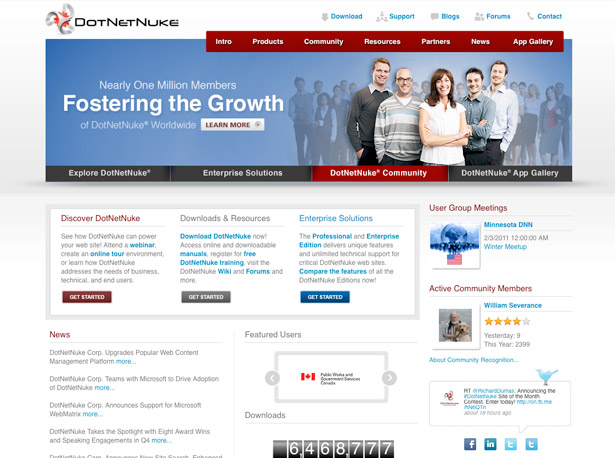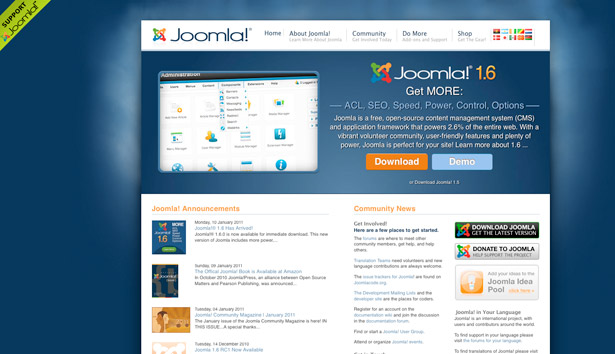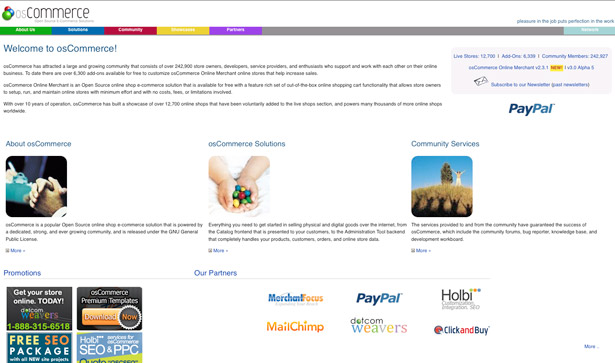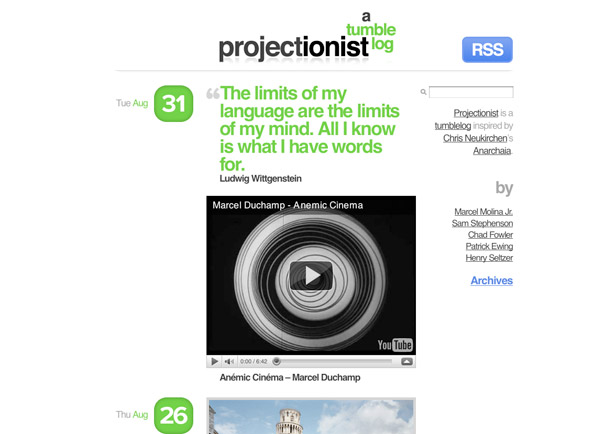Free CMS guide: best alternatives to WordPress
How do you choose a Content Management System to power your site? Andrew Skinner points you towards the best free CMS on the market
Maybe you’re just starting out with a blog, or perhaps you already have a site and adding new content page-by-page with your favourite HTML editor is taking more time than it should. It sounds like you need to choose a Content Management System (CMS). Getting the right one when you start out is important because changing direction can be both difficult and time-consuming later on. So how do you choose? Over the following pages we’ll provide a few pointers to help you decide what’s best for your publishing needs.
The first questions to ask yourself are: “Do I actually need a CMS?” and “How often will I update the content on my site?” If you only make a couple of changes monthly, or even over a year, then the answer to the first question is probably no. If, however, you’re looking to create a blog or a site that’s updated frequently, or your content is updated by multiple authors, then the answer is definitely yes. It’s not just the ease of organising and editing content that may prompt you to set up your site this way. By installing a free CMS, you get access to services and features such as RSS feeds, SEO-optimised URLs, plug-ins and other tools that can all be integrated easily into your site.
Although there are many different CMSs to choose from, they really fall into three main categories: blogging tools, Tumblelogs and content frameworks. For non-enterprise requirements, a free CMS will suffice, as they’re usually expensive and offer sites with a small number of contributors very little value. Adobe does offer its Contribute product, which bridges the gap, but on the whole, open source is the way to go because it offers many choices independent of experience or server configuration.
If the language in which your CMS is created is important to you, all types are catered for. There’s WordPress, ExpressionEngine or Joomla! written in PHP, Movable Type written in Perl, DotNetNuke written using the .NET framework and Typo, Mephisto or Radiant on the Rails framework.
Tools of the trade
Blogging tools such as WordPress, Movable Type and Blogger are specially designed CMSs geared towards the needs of single or small groups of content editors, creating relatively small amounts of article-based content – normally arranged in chronological order. Blogging tools have evolved in recent years to become CMSs in their own right, on which many content-rich sites, such as CNN and MTV properties, are based. They often use the notion of pages and posts, where pages represent content-managed pages and posts represent chronologically organised content that can be shown within the pages as specially formatted areas of text. Textpattern offers a huge degree of customisation in this respect, as it’s specifically based around repeating blocks of a predefined structure.

Blogging tools nearly always come out of the box with support for RSS content syndication and are increasingly supporting the MetaWeblog API, which enables you to create and manage your content using third-party desktop applications such as MarsEdit and ecto. Additionally, all blogging tools are evolving to offer rich support for the inclusion of images, video and audio. The latest version of WordPress 2.5, for example, has taken significant steps to make handling media much easier for content creators. Blogger, on the other hand, keeps things simple and focuses mainly on textual content, enabling basic image uploading through the Admin interface and the image-hosting site Picasa. As with most free CMS, blogging tools require a database back-end and the big hitters work with a large number of different types. However, it’s probably safe to say that MySQL is the most widely supported of these. Bloxom is one exception to this and is a slightly ageing, but widely adopted, file-based publishing system.
Tumblelog-based systems enable short, mixed-media posts rather than the longer editorials found on traditional blogging sites. Authors post links, photos, quotes, dialogues and video. Unlike blogs, Tumblelogs are frequently used to share the editor’s creations, discoveries or experiences, while providing little or no commentary, and many systems include Bookmarklets that enable editors to quickly grab and post things that they’ve found online. A good example is the Projectionist site, although new Tumblelogs are cropping up around the web at a pace, and well-known sites such as Maniacal Rage and Sci-FiHi-Fi are converting to the format. Tools such as Tumblr, Soup, Chyrp and Gelato have been growing in popularity, both as hosted and self-install solutions for Tumblelog editors.
Get the Creative Bloq Newsletter
Daily design news, reviews, how-tos and more, as picked by the editors.
Content Management Frameworks such as Expression Engine require a little more work and often have very steep learning curves. These tools tend to be the most flexible and offer many features for web professionals that the more personal products don’t include. They’re designed to be moulded to specific workflows, support complex layouts and multiple blogs, and rarely function in the way you’d like straight out of the box. This is often intimidating for new users, but frameworks such as Drupal have extensive user bases and active communities who are always willing to lend a hand.

Finally, there are several niche CMS solutions available, such as Zen Cart or osCommerce – which focus on ecommerce – or Community Server for managing the content of a social network. If you’re an artist looking to create an online portfolio, then Indexhibit may suit your needs. If you just want to write, try SimpleLog.
Diversity and themes
As you’re sure to have noticed, content-managed sites don’t all look the same. This is because content management systems enable you to change the look and feel of your site by using themes. The building blocks of a theme are HTML and CSS templates that govern how your site will be displayed on the web. They differ slightly from standard HTML and CSS because they include tags specific to the host CMS. These tags are inserted by the theme creator to tell the CMS where to put each piece of the page content – for example, the title of the entry or body copy. You can create your own themes using your knowledge of HTML, CSS and documentation provided by the CMS vendor (for example the WordPress Codex). For most free CMS, however, you can find ready-made themes online and use them out of the box or customise them to suit your needs.

Nearly all CMS systems are designed to be extended (with the exception of hosted solutions) and the main way of doing this is through the use of plug-ins. Popular plug-ins protect your site from comment spam, pull in content from other sites such as Flickr or enable you to display your del.icio.us bookmarks. Others help you submit your content to search engines. They’re installed by adding files to the core CMS and placing specific tags in your Theme templates.
Find your ideal CMS
Now we’ve seen what’s available, which one do you choose? This is a tough question, as there are so many great tools out there, but the choice can be narrowed down by asking some key questions.

First, what type of site are you creating? This may seem obvious now, but sites grow and change over time. You may find, for example, that limiting yourself to a Tumblelog early on may not enable you to post that industry-changing thought piece in six months’ time or – in this era of user-driven content and two-way conversations – you may find you want to accept comments on it from your readers. Tumblr currently doesn’t support this feature and, because it’s hosted, you can’t add it yourself. Additionally, not all CMSs produce standards compliant code. This can be especially true of the hosted options such as Blogger, where standards can fall by the wayside, although community pressure and the existence of expertly crafted themes means that with a bit of care you can still easily create a standards-compliant site.
Second, do you want to host the site yourself? If you’re not comfortable installing the CMS software yourself, you may want to think about choosing a hosted option – they make a perfect home for those starting out. Hosted options tend not to be available for Content Framework-based CMSs, as everyone’s needs are too different to be adequately supported. Three of the best are from Google, in the form of Blogger, TypePad (a hosted version of Movable Type) and WordPress. They all offer good support and any updates to the software are managed for you. Most hosted services will enable editors to point personal domains to their accounts; however, you should check before you take the plunge, as there’s sometimes an extra fee associated with this.
And finally, how flexible do you need to keep the site? With hosted options you inevitably sacrifice a certain degree of flexibility, as the provider needs to ensure the integrity of the service for all. For this reason, we’d recommend looking at self-install software if you want to make heavy use of specialised plug-ins or write your own themes.

If you’re still unsure, the best advice would be to try out a few CMSs before you commit. Look for active communities and formal support options, such as those provided by Six Apart or Expression Engine. Create accounts with the hosted varieties and try uploading some of your content. Even non-hosted systems normally have links to sample installs, where you can see how they work. Most importantly, take your time. Even though migrating between CMS versions is becoming easier as vendors add import/ export options to their products, it’s still a time-consuming task. Installing a CMS yourself can take a while, but most are easy to get up and running – usually just requiring you to edit a configuration file to tell it where to find your database. With things this simple, what are you waiting for?
Check out the 40 best Tumblr blogs for designers at our sister site Creative Bloq.

Thank you for reading 5 articles this month* Join now for unlimited access
Enjoy your first month for just £1 / $1 / €1
*Read 5 free articles per month without a subscription

Join now for unlimited access
Try first month for just £1 / $1 / €1
The Creative Bloq team is made up of a group of design fans, and has changed and evolved since Creative Bloq began back in 2012. The current website team consists of eight full-time members of staff: Editor Georgia Coggan, Deputy Editor Rosie Hilder, Ecommerce Editor Beren Neale, Senior News Editor Daniel Piper, Editor, Digital Art and 3D Ian Dean, Tech Reviews Editor Erlingur Einarsson, Ecommerce Writer Beth Nicholls and Staff Writer Natalie Fear, as well as a roster of freelancers from around the world. The ImagineFX magazine team also pitch in, ensuring that content from leading digital art publication ImagineFX is represented on Creative Bloq.
